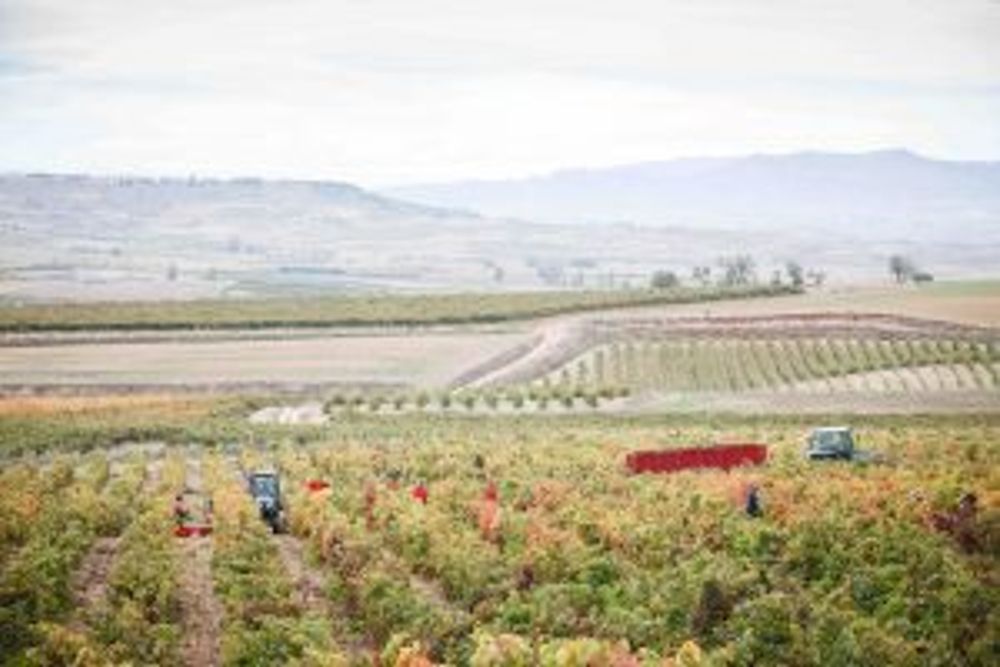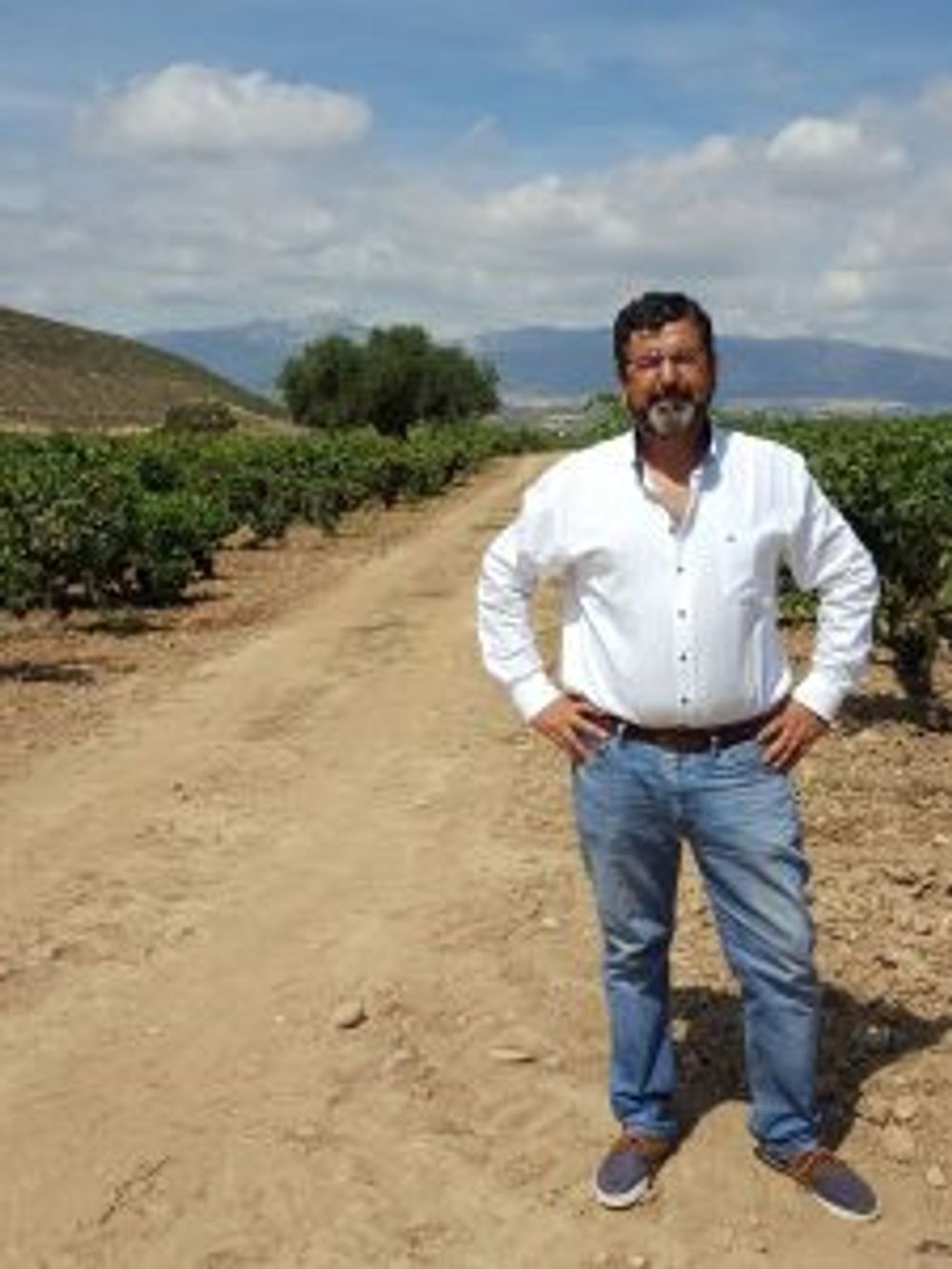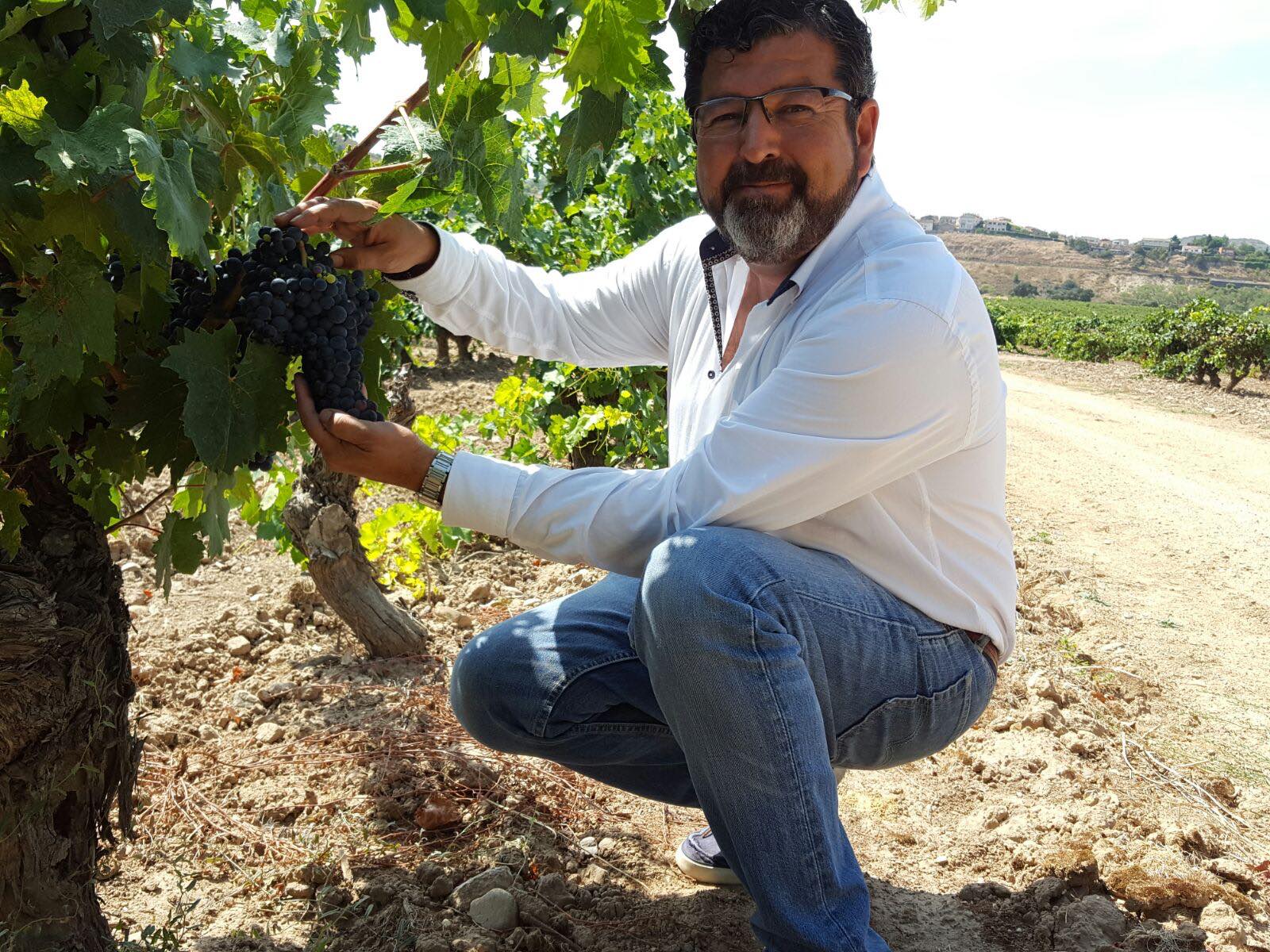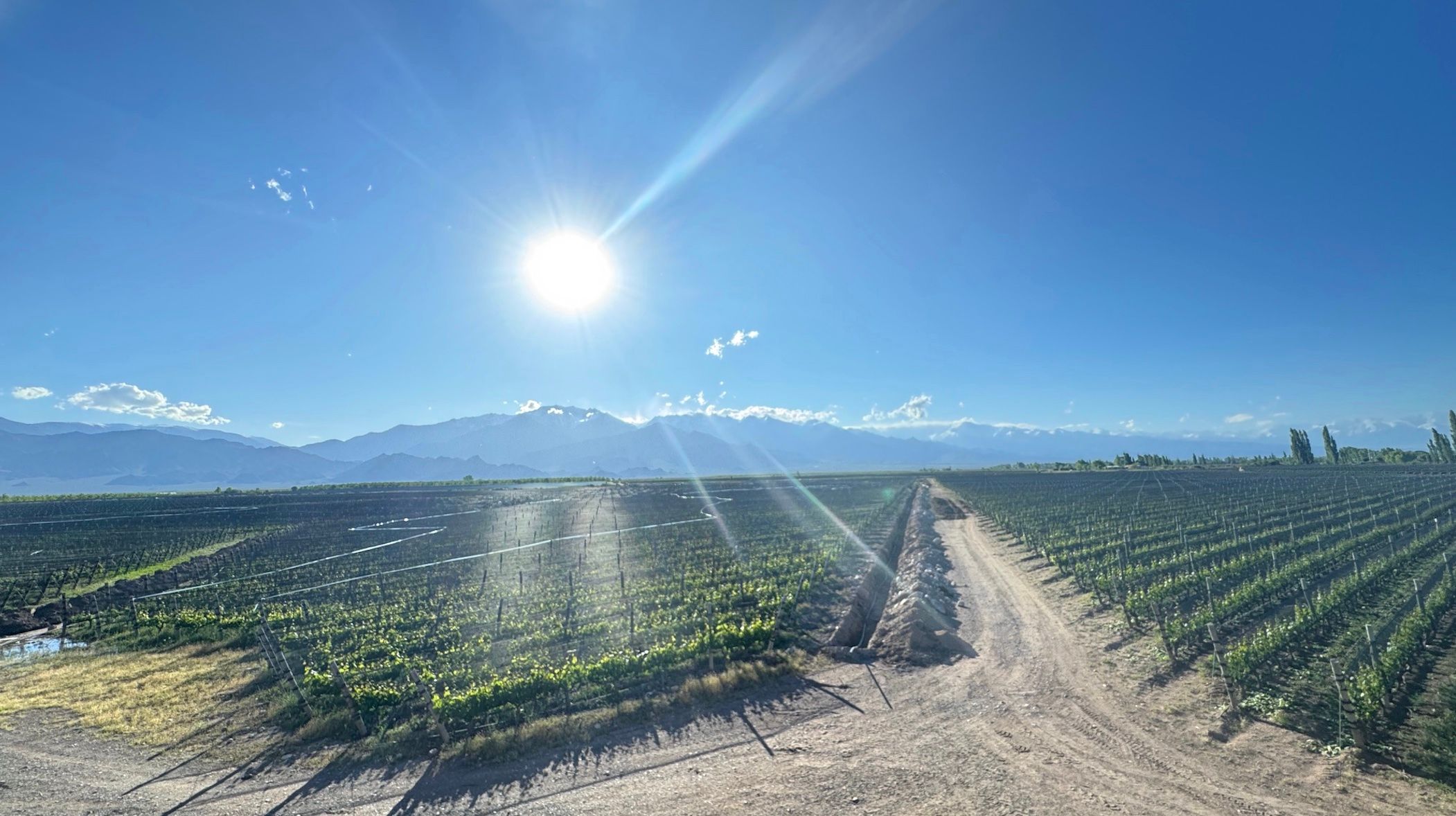An argument at wine club over a bottle of Vina Del Olivo is taken to Jesus Madrazo, chief winemaker at Rioja’s Bodegas Contino who has heard it all before.
It all seemed pretty logical. Knowing that I am meeting Bodegas Contino winemaker Jesus Madrazo the following week I take along a bottle of his top Rioja, 2007 Vina Del Olivo to my wine club. Five wine nerds, meet monthly, been going for over 10 years, that sort of thing.

The ‘offending’ bottle that started the argument
“I know”, I thought, “I’ll show a bottle and get some views to take into the interview.”
Incidentally, I have bought a range of Contino wines for a number of years and rate it highly.
So the rules of wine club are: 1/ Show what you want to show, 2/ Minimum £20 a bottle spend, 3/ Taste blind (always).
Someone hosts, someone brings cheese, someone bakes a loaf. We all enjoy. But (weirdly) when I reveal the bottle that we drank, all hell breaks loose. And I mean it gets a bit shitty. “When you buy a Rioja, you should get a wine that has Rioja characteristics!” is how my Belgian chum puts it. A tad vociferously.
Interesting angle. Personally I like it that not all Barolos smell or taste the same and I feel the same about my Rioja. And he did seem to rather enjoy drinking the wine, not knowing what it was. Let’s just say.
The other point here is that in a lot of ‘traditional’ Rioja, the fruit, purity and focus are lost – whereas you find these in a single estate winery such as Contino.
Traditional or modern, Jesus?
Madrazo has, of course, heard the argument all before and smiles.
A fascinating, gregarious man, whose wines are becoming massively popular in the UK, we sit drinking black coffee at St Pancras, chewing over the fat of the argument.
“If you taste my Gran Riserva in magnum you would say it is modern, but it isn’t, it is fermented in concrete (without epoxy resin). I then let it spend three years in oak (always American never new) and then three years in magnum. You taste it and it is so young.”
Madrazo’s inspiration here comes from Ezequiel, the ex-winemaker at CVNE, the wine group that co-owns Contino and for whom Jesus’s father, Jose, used to work until he left to run Contino.
“In fact what I did was I set out to copy the master blender Ezequiel, (nicknamed ‘the wizard’) who was the winemaker at CVNE and Vina Real from 1954-1973. He oversaw the ’64, ’62, ’78, ’83, ’54, ’58 vintages – amazing wines.”

The uniqueness of the terroir allows grapes to be picked 2-3 weeks before the rest of Rioja
Madrazo agrees that Contino is distinctive as a Rioja estate, but that is a result of the specific terroir in this part of Rioja’s Alavesa region. The bodegas sits in a 62-hectare vineyard in a large meander of the River Ebro, facing south at an altitude of 400m. The calcareous clay soils have an effect on the vines as do the mix of both Mediterranean and Atlantic climate – these are what sets Alavesa apart from the other two sub regions of Rioja.
“Contino is different, everything is ripe even the graciano (the acidic grape that his father rescued from obscurity by planting and mixing with the garnacha and tempranillo) and yet we pick early – 10-15 of September when the rest of Rioja picks in October. And yet, still, our wine is very powerful and very mineral.”
Madrazo sees himself as very different to the Rioja producers who started the ‘modernist’ trend in the 1990s “They did malolactic in new oak and then aged them in new oak, but these wines from ’94 and ’95 are dipping now,” he says.
Contino’s secret is to keep the fruit dominant over the oak, so that in time the two will integrate and age gracefuly.
“It’s all about harmony, balance and length… am I traditional or modern? I don’t know I don’t really care.”
OK he’s not bothered about labels, what is he bothered about?
So what Madrazo really does care about is making excellent wine, particularly focusing on the flagship riserva which makes up 80% of the estate’s production, currently at 350k bottles per annum.
Despite the first grapes grown on the estate being white, it is the riserva that was actually the only wine produced at Contino for the first 20 years. This wine take precedence over all others.
“In a poor vintage I try and make a great riserva, I don’t make eight bad wines,” he says.
Seven times Jesus has decided not to make the Olivo and even more absences for for the gran riserva. From 1996-2001 there wasn’t any produced on the estate.

Jesus Madrazo, head winemaker at Contino
The other thing that really concerns Madrazo since he took over the reins of the winery from his father in 1984, is to allow the terroir to speak through the wine, something that has seen the range expand.
One of the first things Madrazo presided over was the mapping out of the various vineyards according to terroir and the result of this work has seen him realise the potential of two plots of garnacha and graciano that he is making 100% single varietals of.
He started producing Rioja’s first 100% graciano in 1994, from 11 hectares of old vine, that yields 5,000 bottles per annum. He also focused on a parcel of vines that surround an 800 year old olive tree and are called Olivo. It’s the driest part of the estate, and produces (the ‘controversial’!) Vina Del Olivo, of which 10,000 bottles are made annually, if the vintage allows.
Contino has always been rare in Rioja in that it is a single estate, making premium estate-bottled wines, a potential that Jose Madrazo first saw when he was buying grapes off Contino while working at CVNE. The winery was officially founded by Jose and some other CVNE figures in 1973, before presiding over the estate when Rioja underwent a period of massive change in terms of international exposure and investment.
The vagaries of the weather aside (in 2013 they lost almost all of their crop to hail and only produced 5,000 bottles of Riserva), the biggest challenge making Rioja currently is the way the market has become polarised.
Madrazo believes that Rioja is becoming polarised between the mass market where large quantities of ‘Gran Riserva’ are released for an unsustainable price and those single estates, like Contino, that are focussing on terroir.
“Rioja has, of course, a history of blending so the terroir story has become a bit lost but it will emerge,” he says.
Until that time, Madrazo will continue focussing on increased quality, sales (15-20% is exported and steadily increasing for the last three years) and smaller projects like his barrel-aged rosé made from 50% Garnacha and 50% Graciano, another first in Rioja.
“This is tannic rosé with high acidity, that is meant to age,” he says “I always had it unlabelled for friends, but now I am making three 500 litre barrels. Hedonism is taking magnums, but this rosé is also for the on-trade.”










































